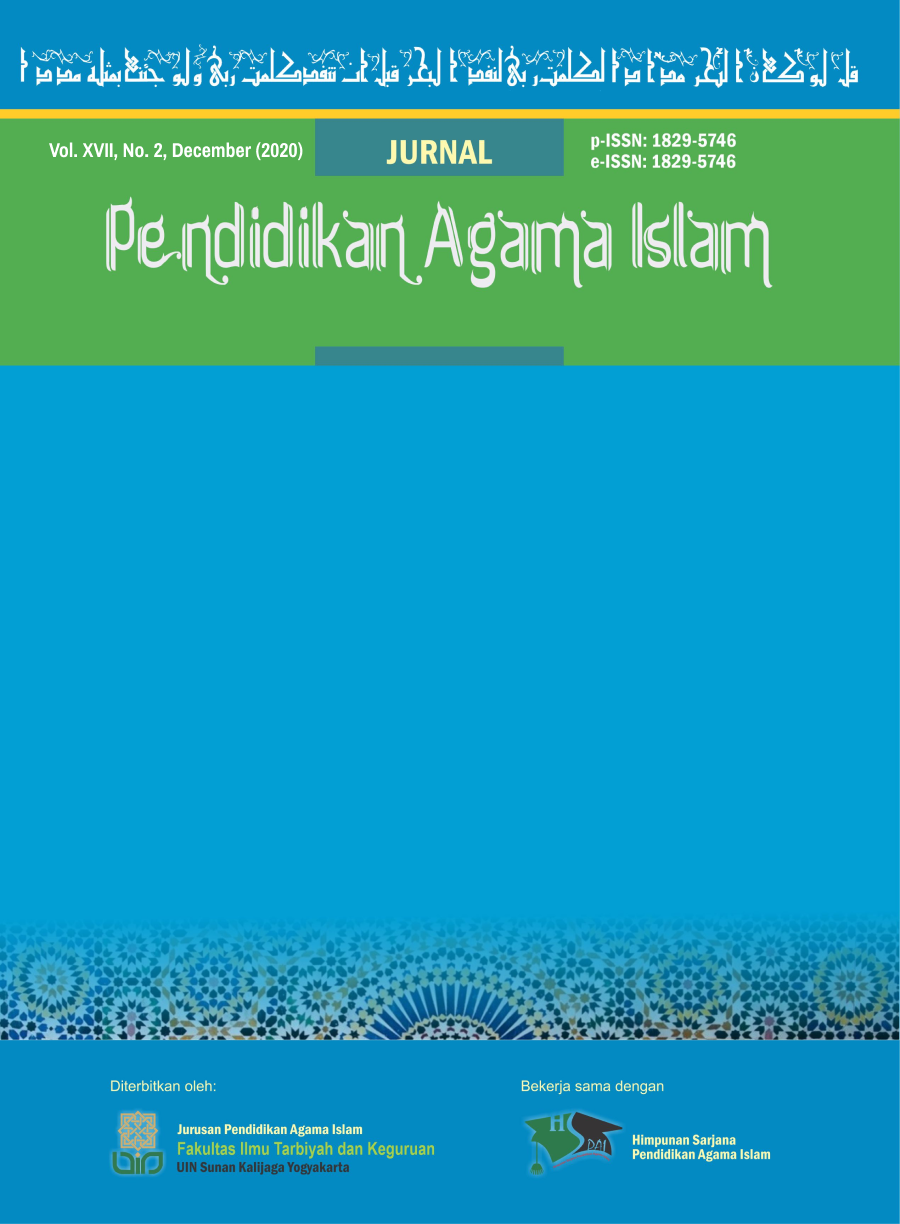Juvenile Delinquency and Its Coping Strategy: An Islamic Education Perspective
##plugins.themes.bootstrap3.article.main##
Abstract
This research is aimed to portrait the juvenile delinquency and strategy to cope it from Islamic education point of view. The fact that numbers of juvenile delinquency is increasing from time to time has become ironic because the adolescents involved in delinquency and crime are also students. School is a place that formally not only to provide students with knowledge and science, but also to educate them to have good character and attitude. This type of research, seen from the data collection point of view, is a type of library research by using content analysis method in analysing data. The research found that from the islamic education perspective, the synchronization of education between the family environment, community environment and school environment in the form of cultivation of morality/religion in the family, cultivation of morals/religion in schools and also by widening knowledge is the best strategy in coping juvenile delinquency.
Keywords:
Downloads
##plugins.themes.bootstrap3.article.details##
Copyright
Copyright Notice
Authors who publish with this journal agree to the following terms:
- Authors retain copyright and grant the journal right of first publication with the work simultaneously licensed under a Creative Commons Attribution License that allows others to share the work with an acknowledgement of the work's authorship and initial publication in this journal.
- Authors are able to enter into separate, additional contractual arrangements for the non-exclusive distribution of the journal's published version of the work (e.g., post it to an institutional repository or publish it in a book), with an acknowledgement of its initial publication in this journal.
- Authors are permitted and encouraged to post their work online (e.g., in institutional repositories or on their website) prior to and during the submission process, as it can lead to productive exchanges, as well as earlier and greater citation of published work.
References
Albanjari, E. S. (2018). Mengatasi Kenakalan Remaja Pada Masa Transisi. Tadrib: Jurnal Pendidikan Agama Islam, 4(2), 246–259. https://doi.org/10.19109/tadrib.v4i2.2450
Aw, S. (2019). The Failure of Persuasive Communication among Social Workers in Mentoring Street Children. Jurnal Komunikasi, Malaysian Journal of Communication, 33(4), 21–37. https://doi.org/10.17576/ JKMJC-2017-3304-02
Aw, S., Widiarti, P. W., Setiawan, B., Mustaffa, N., Ali, M. N. S., & Hastasari, C. (2020). Parenting and sharenting communication for preventing juvenile delinquency. Informasi, 50(2), 177–186. https://doi.org/10.21831/informasi.v50i2.36847
Azhar, M. (2015). Dahsyatnya Energi Syukur, Istighfar, Muhasabah. Assalam Publishing.
Binti Muawanah, L. (2012). Kematangan Emosi, Konsep Diri dan Kenakalan Remaja. Persona:Jurnal Psikologi Indonesia, 1(1). https://doi.org/10.30996/persona.v1i1.9
Brouwer, M. (2009). Internalisasi dari Realitas. In Kepribadian dan Perubahannya.
Burhanudin, Y. (1999). Kesehatan Mental. Pustaka Setia.
Cohen, L., Manion, L., & Morrison, K. (2018). Research Methods in Education (8th ed.). Routledge.
Darajat, Z. (1997). Membina Nilai-nilai Moral di Indonesia. Bulan Bintang.
Darajat, Z. (2005). Remaja: Harapan dan Tantangan. Ruhama.
Imani Khan, R. (2012). Perilaku Asertif, Harga Diri dan Kecenderungan Depresi. Persona:Jurnal Psikologi Indonesia, 1(2). https://doi.org/10.30996/persona.v1i2.40
Noszczyk-Bernasiewicz, M. (2016). Demoralization and Juvenile Delinquency – the Dynamics and Dimensions. Resocjalizacja Polska, 11, 145. https://doi.org/10.22432/pjsr.2016.11.11
Sarwono, S. W. (2004). Psikologi Remaja. Raja Grafindo Persada.
Sriyanto, -, Abdulkarim, A., Zainul, A., & Maryani, E. (2014). Perilaku Asertif dan Kecenderungan Kenakalan Remaja Berdasarkan Pola Asuh dan Peran Media Massa. Jurnal Psikologi, 41(1), 74. https://doi.org/10.22146/jpsi.6959
Sudarsono. (2011). Islamic Ethics on Juvenile Delinquency. Rineka Cipta.
Sugiyono. (2012). Metode Penelitian Kuantitatif Kualitatif dan R&B. Alfabeta.
Syah, M. (2009). Psikologi Belajar. Logos.
Titscher, S., Meyer, M., Wodak, R., & Vetter, E. (2000). Methods of Text and Discourse Analysis. SAGE.
Ulwan, A. N. (1981). Pedoman Pendidikan Anak dalam Islam, CV. Asy-Syifa.
Usman, M. U. (2001). Menjadi Guru Profesional. PT Remaja Rosda Karya.
Windradini, S. (n.d.). Psikologi Perkembangan Masa Remaja. Usaha Nasional.
Zeid, M. (2004). Metode Penelitian Kepustakaan. Yayasan Obor Indonesia.
1254
Views
876
Downloads





